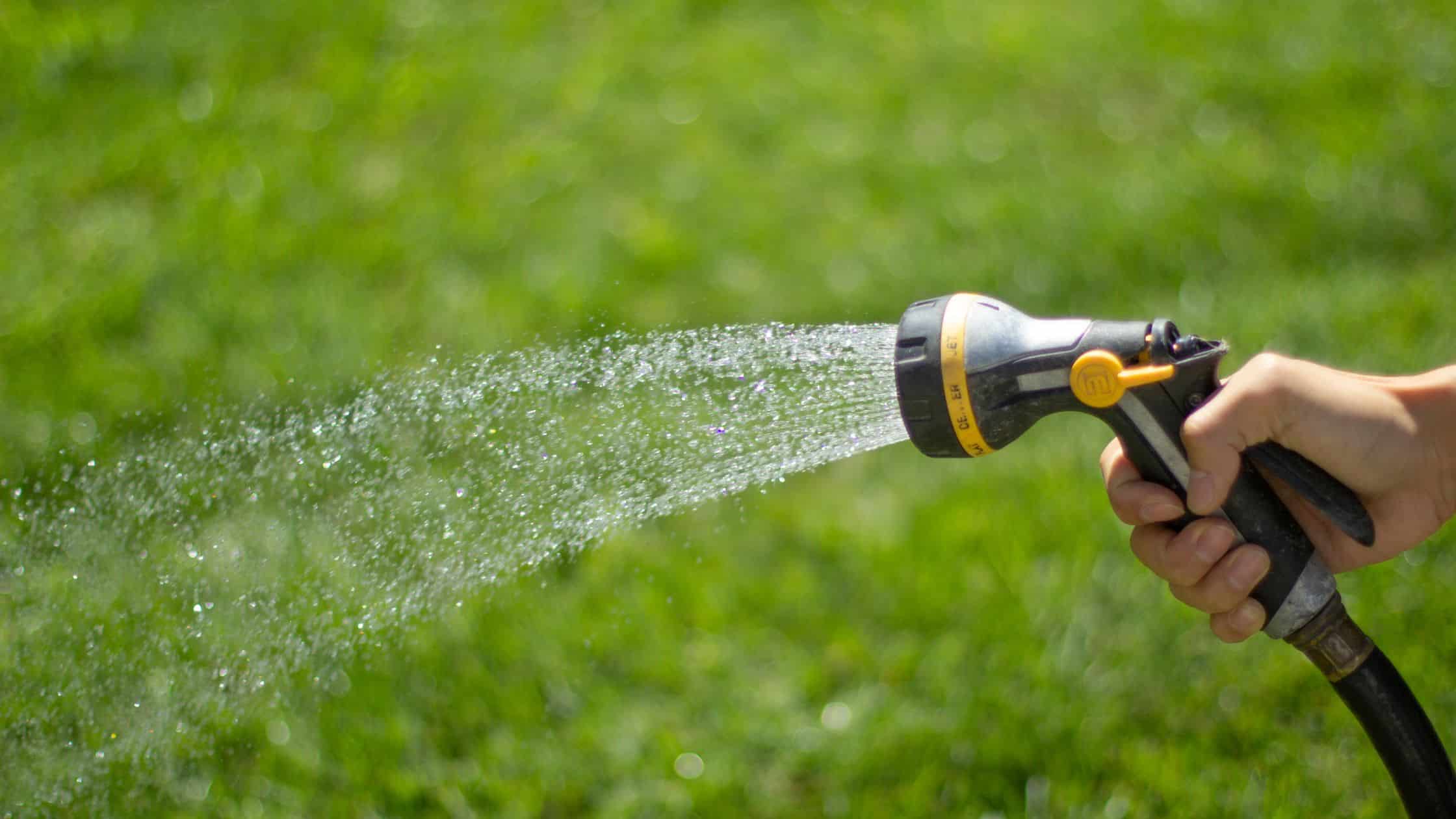
It’s June: Should You Be Watering Your Lawn Yet?
Yes, you should likely start watering your lawn in June — especially if your area hasn’t had consistent rainfall. While early summer often brings occasional storms, it’s not always enough. Lawns need about 1″ of water per week to stay green and healthy, and skipping early watering can lead to stress, browning, or even dormancy before summer hits full swing.
Introduction
June weather can be tricky — one week it rains every day, the next your grass is dry and crunching underfoot. If you’re wondering whether it’s time to turn on the sprinkler, you’re not alone.
This guide will help you figure out:
-
Whether your lawn actually needs watering yet
-
How to tell if June rain is enough
-
Signs your grass is stressed
-
How much (and when) to water
-
Local insight for Northeast Ohio homeowners
Let’s get into it.
How Much Water Does Your Lawn Need?
Most lawns — especially cool-season grasses like Kentucky bluegrass or fescue — need about 1 to 1.5 inches of water per week, including rainfall.
That water:
-
Encourages deeper roots
-
Keeps grass green and flexible
-
Helps prevent heat stress before July hits
But not all water is equal. A week with three quick thunderstorms might seem “wet,” but if that rain runs off hard-packed soil or evaporates quickly, your lawn might not actually benefit much.
Has It Rained Enough in June?
✅ Quick DIY Check:
-
Set out a rain gauge or empty tuna can in your yard.
-
Check weekly to see if you’ve hit 1″ of total rainfall.
-
If not? Supplement with irrigation.
If you’re in Northeast Ohio, early June weather is inconsistent:
-
Some years bring soaking rains
-
Other years start dry and lead into drought
-
Urban lawns with shallow soil dry out faster, even in mild years
💡 Pro Tip: Local weather apps only show area-wide rain. Your specific yard could get more or less depending on slope, soil, or tree cover.
Signs Your Lawn Is Already Thirsty
Even if it looks green now, your grass might be on the edge of stress. Here’s what to watch for:
- Grass blades start folding or curling inward
This is the turf’s natural defense mechanism to conserve moisture. If blades look thinner or feel slightly crunchy underfoot, it’s a clear sign they’re dehydrated. - Footprints or mower tracks remain visible
Healthy, well-watered grass springs back immediately. If your footsteps leave a trail that lingers, the grass lacks the moisture it needs to stay upright and resilient. - Dull, bluish-gray patches start appearing
Stressed grass loses its bright green hue. Look for subtle discoloration, especially in full-sun or high-traffic areas—it’s often the first place to show signs of dryness. - Soil feels dry or cracked 2–3 inches below the surface
Take a small shovel or screwdriver and check below the surface. If the soil is bone dry or cracking at root depth, your grass can’t access the water it needs. - Slowed growth or uneven texture across zones
If some areas of your lawn look thinner, patchier, or haven’t grown as much since your last mow, water may be inconsistent or insufficient in those spots.
These early symptoms mean it’s time to water — don’t wait until it turns brown.
What Happens If You Wait Too Long?
Letting grass go dormant isn’t deadly — but it does have trade-offs:
-
You’ll get a patchy, brittle lawn by July
-
Weeds take over dry, stressed areas
-
Bare spots may need reseeding in fall
-
Recovery takes longer and uses more water later
A better strategy? Stay ahead of stress by watering before visible damage sets in.
When and How to Water for Best Results
💧 How Much:
1 to 1.5 inches per week (including rain)
🕓 When to Water:
-
Early morning (5–9 AM) is ideal
-
Avoid evening watering — it can cause fungal growth
-
Midday watering wastes water through evaporation
🧠 How to Know You’ve Watered Enough:
-
Use a tuna can or small container to measure sprinkler output
-
Water until the container fills to 1″
-
Water 2–3 times per week, not daily — deep soak is better than frequent sprinkles
Northeast Ohio Lawn Insight: June Patterns
In our region, early June often feels like spring, but by mid- to late June, lawns can dry out quickly.
Things that make local lawns dry faster:
-
Full sun exposure without trees
-
Clay-heavy soil that sheds water instead of soaking
-
Compacted soil from heavy foot traffic
-
South-facing slopes that bake in the sun
If your neighborhood hasn’t had a good soaking rain in 5–7 days, it’s a smart move to start watering now — before your lawn starts to show stress.
What If It’s Raining Intermittently?
If you’re getting a light sprinkle every few days, that’s not enough.
Rain needs to be slow and steady to soak the soil at root depth. A fast thunderstorm might:
-
Run off before soaking in
-
Only moisten the top ½ inch of soil
-
Trick you into skipping needed irrigation
Use your rain gauge or soil probe (a screwdriver works!) to check how far moisture has penetrated.
FAQ: June Lawn Watering
Do I really need to water if it’s green?
Yes — if your yard hasn’t had enough rain, the green won’t last. Watering before stress helps maintain health and color longer.
What’s better — sprinkler or hose?
Sprinklers are more even, but a hose works fine if you monitor time and output. Drip systems work well for small lawns or borders.
Is it bad to overwater?
Yes. Too much water can suffocate roots and promote disease. Always aim for deep watering, not daily misting.
Should I fertilize in June too?
Light feeding is okay early in the month, but avoid heavy fertilizing during heat. Focus on watering and mowing.
How long should I run my sprinkler?
That depends on your system — test how long it takes to fill 1″ in a small container, then use that as your watering duration.
Conclusion
If your lawn’s starting to dry out — or your June rain has been spotty — now is the time to act. Don’t wait for full-on drought stress before reaching for the hose. A little consistent care now goes a long way toward keeping your lawn green, soft, and healthy through summer.
Need help? We offer seasonal lawn maintenance, watering evaluations, and weekly check-ins to make sure your yard stays summer-ready — no guesswork needed.




No Comments
Sorry, the comment form is closed at this time.